Mental (Licensed House)
The Asylum was licensed to acommodate 70 male and 80 female paupers, and 12 male private patients, despite protests from the local inhibitatnts of Peckham Road that the Asylum and its grounds were too small for such a number, and that they were overlooked by the workhouse and two private houses.
The grounds of the Asylum consisted of 20 acres, laid out in a park-like manner. A small market garden within them provided produce for the inmates.
By 1859 the Asylum contained 318 inmates - some 247 paupers and 71 private patients - who were kept occupied by work in the grounds (unusually for the times, both sexes were allowed to mix together in the garden). Each year a house by the seaside was hired for use as a holiday home.
By 1878 it was the second largest asylum in London, licensed to accommodate 362 inmates (the largest was Grove Hall in Bow, with 443). By this time the Asylum consisted of the original buildings and several detached houses and cottages in which patients were accommodated according to their illness and social status.
Over the next decade the Asylum acquired the houses to the south of the site. In 1885 it began to receive imbecile patients from Westminster, an arrangement which terminated in 1902.
In 1898 the Asylum contained 489 private and pauper patients of both sexes.
By 1919 the Asylum was known simply as Camberwell House, with Dr Francis Henry Edwards as the Medical Superintendent. Sports were encouraged and the facilities for the patients included tennis counrts and a putting green. The Recreation Hall contained a badminton court. There was also a Chapel.
As treatments became available for mental patients, Camberwell House offered prolonged immersion baths, action-therapy, shock treatment and modified insulin treatment. Occupational therapy and callisthenics were also encouraged.
During WW2 a high explosive bomb fell in the grounds.
The hospital did not joined the NHS in 1948, remaining independent until its closure in 1955.
Present status (February 2009)
The Grade II listed buildings are currently occupied by Southwark Borough Council for various offices. They have recently been sold to the Camberwell College of Arts for student accommodation, due to open in September 2012 as the Camberwell Campus, with accommodation for 155 students.
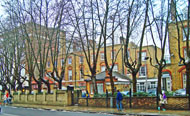
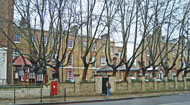
The former hospital buildings next to the Town Hall on the north side of Peckham Road (above and below).

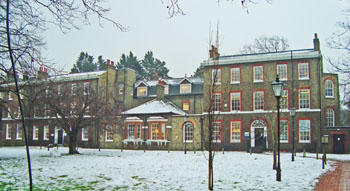
The former hospital buildings on the south side of Peckham Road (above and below). (The cast-iron railings were Grade II listed in September 2010).
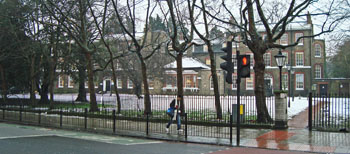
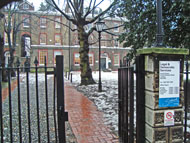
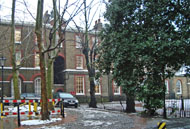
The local Register Office is in the eastern-most block.

The Sceaux Gardens estate was built in the grounds of Camberwell House during the late 1950s. It was the first high-rise development in Camberwell and one of the first in London. A fire in one of the blocks in 2009, which killed 6 people, has led to questions about the safety of the buildings' design.
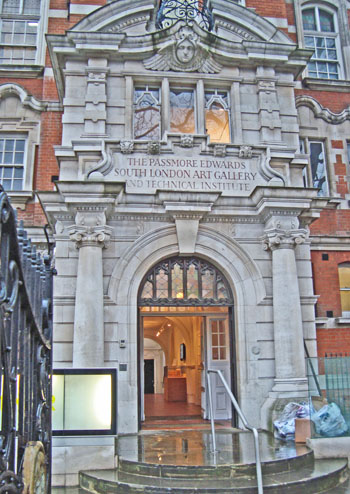
The Passmore Edwards South London Art Gallery and Technical Institute nearby in Peckham Road. Nothing to do with the Hospital, but a fine old building. Today it is the South London Gallery.
(Author unstated) 1879 Lunatics in licensed houses. British Medical Journal 1 (950), 395.
Ernst W 1998 Asylum provision and the East India Company in the Nineteenth Century. Medical History 42, 476-502.
Subotsky F, Dudman J 2012 The Founders of Camberwell House Asylum. Friends of West Norwood Cemetery. Newsletter No. 73, 8-11.
http://archives.wellcome.ac.uk
http://blog.wellcomelibrary.org (1)
http://blog.wellcomelibrary.org (2)
http://studymore.org.uk
http://wellcomelibrary.org
www.aim25.ac.uk
www.alphabetthreat.co.uk
www.british-history.ac.uk
www.britishlistedbuildings.co.uk
www.exploringsouthwark.co.uk
www.geograph.co.uk
www.londongardensonline.org.uk
www.lookandlearn.com
www.rcpsych.ac.uk
www.stephenwilmot.com
Return to alphabetical list
Return to home page